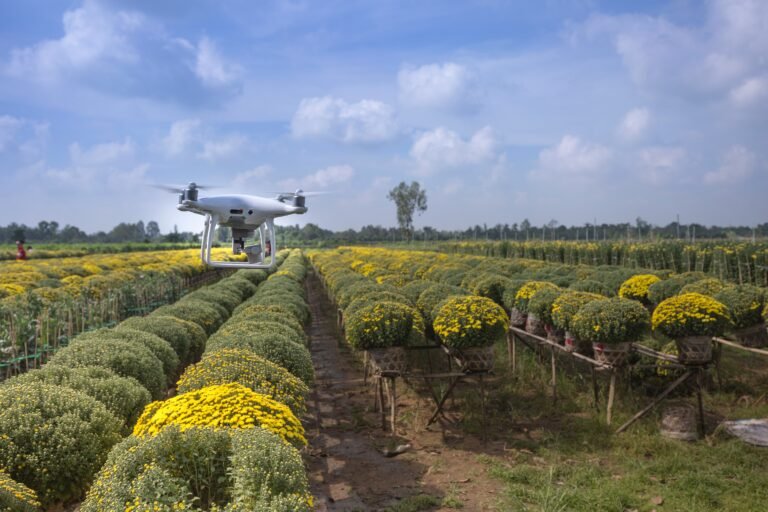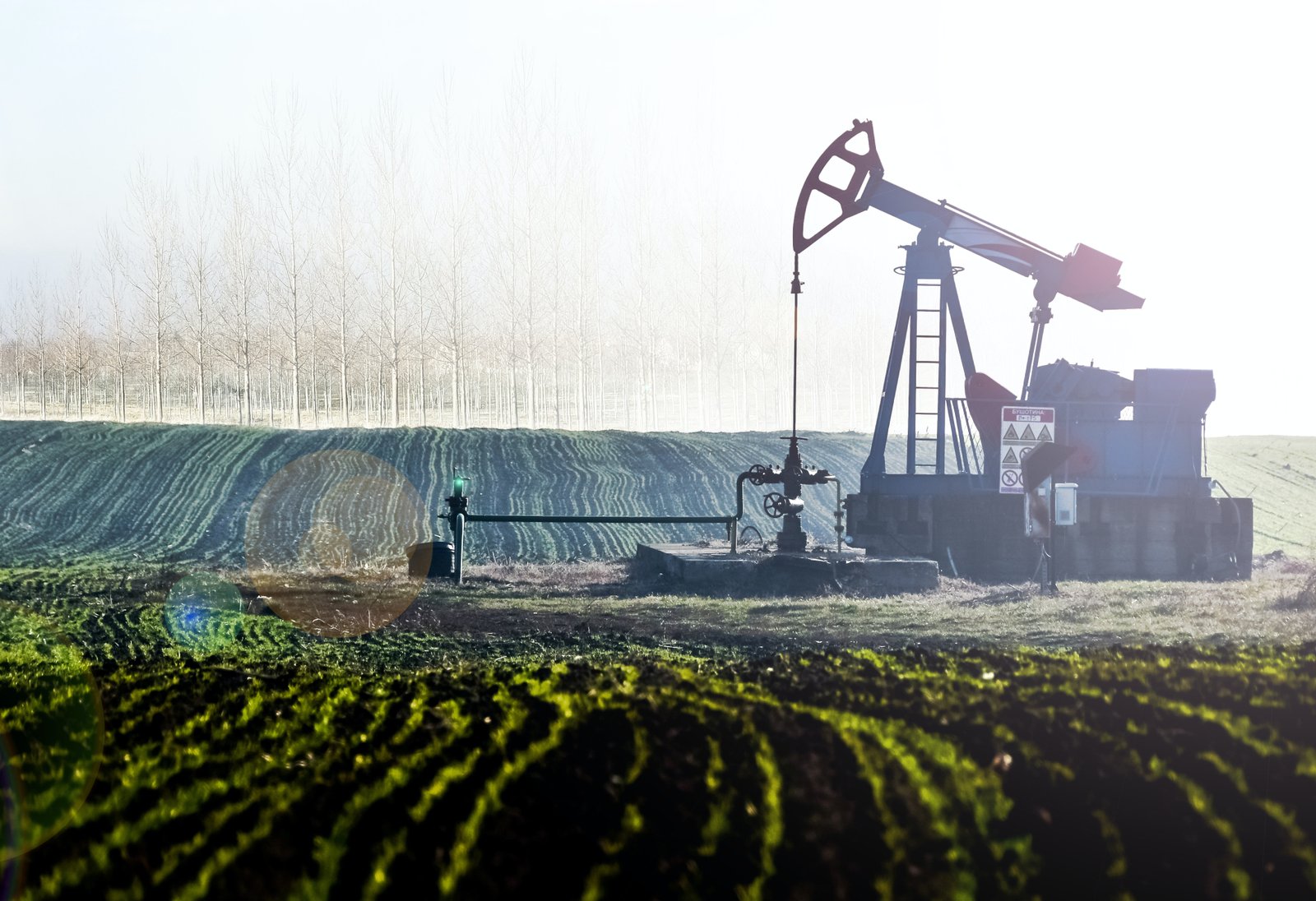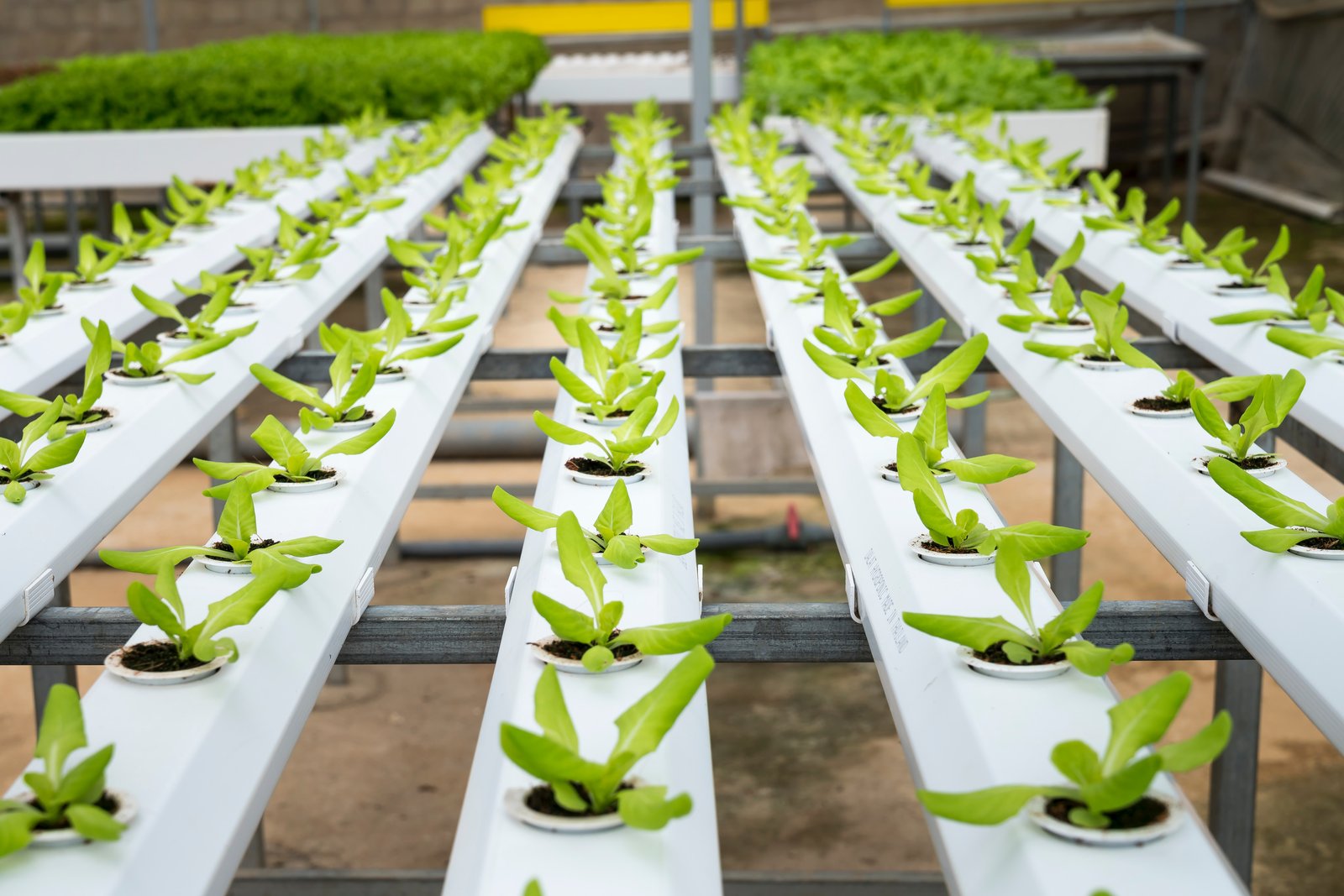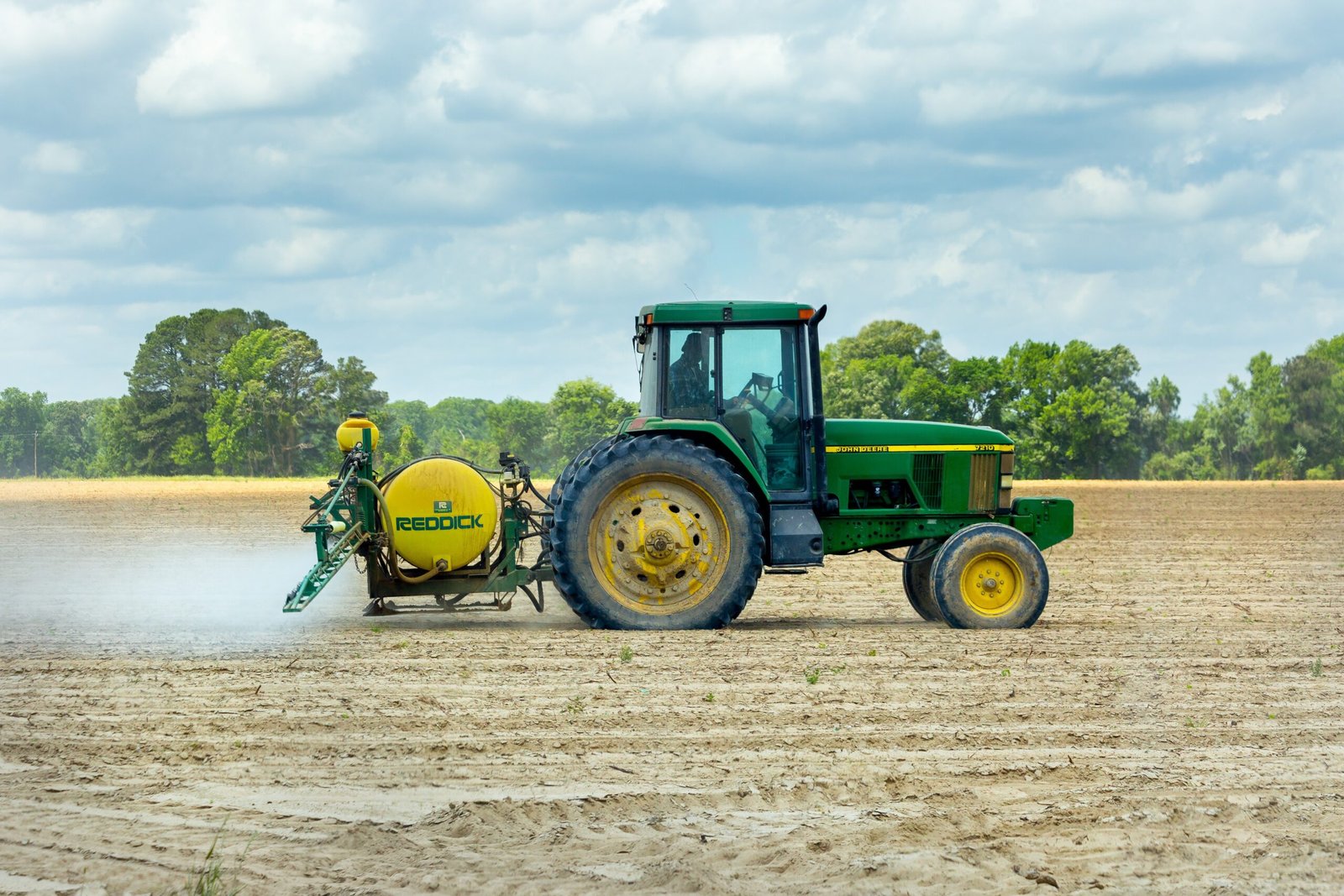
How Technology Can Help the Agriculture Sector
In the modern era, the marriage of technology and agriculture has become a dynamic force, revolutionizing every facet of this vital sector.
As the global population burgeons and environmental challenges loom large, technology emerges as the key that unlocks efficiency, sustainability, and growth in agriculture.
Interesting Stat: By 2050, the world’s population is projected to reach 9.7 billion, necessitating a 60-70% increase in food production.
What is the Agriculture Sector?
The Agriculture sector encompasses the cultivation of crops, raising livestock, and all activities involved in the production of food, fiber, and other raw materials. It forms the backbone of economies worldwide, providing sustenance, employment, and raw materials for various industries.

Why is this Sector Important?
The importance of the Agriculture sector cannot be overstated. Beyond feeding the global population, agriculture contributes significantly to employment, livelihoods, and economic growth.
In many developing countries, agriculture employs the majority of the workforce, making it a crucial driver of poverty reduction.
Interesting Stat: Agriculture provides livelihoods for over 40% of the global population.
Unique Challenges of the Agriculture Sector
While its significance is undeniable, the Agriculture sector grapples with a myriad of challenges.
Climate change disrupts weather patterns, affecting crop yields. Limited access to resources such as land, water, and credit poses hurdles for small-scale farmers.
Additionally, post-harvest losses due to inadequate storage and transportation systems hamper efforts to address global food security.
Interesting Stat: Approximately one-third of food produced for human consumption is lost or wasted globally.
Modern Technology in Agriculture
Big Data: The utilization of Big Data enables predictive analytics, helping farmers make informed decisions about planting, fertilizing, and harvesting. This data-driven approach enhances crop yield forecasts and resource allocation, leading to more efficient production.
Interesting Stat: The global agricultural Big Data market is projected to reach $4.55 billion by 2025.
Artificial Intelligence: AI algorithms analyze vast amounts of data to provide real-time insights into soil conditions, pest infestations, and crop diseases. AI-powered drones and sensors monitor fields with precision, optimizing resource use and improving crop quality.
For instance, AI can identify minute variations in leaf color that signal a potential disease outbreak, allowing farmers to take prompt action.
Interesting Stat: The AI in agriculture market is projected to reach $2.6 billion by 2025.
Cloud Computing: Cloud platforms facilitate data storage and sharing, bridging the gap between farmers and experts.
Real-time weather forecasts, market trends, and best practices become accessible to even the remotest farmers. This democratization of information empowers farmers to make informed decisions and adapt to changing conditions swiftly.
Interesting Stat: The global agriculture cloud market is anticipated to reach $2.4 billion by 2025.
Internet of Things (IoT): IoT devices monitor soil moisture, temperature, and other crucial parameters, relaying data to farmers’ devices.
This real-time data empowers farmers to make timely irrigation and fertilization decisions, leading to efficient resource utilization and improved yields.
Interesting Stat: The global IoT in agriculture market is estimated to reach $30.2 billion by 2025.
Blockchain: Blockchain ensures transparency and traceability throughout the supply chain. Consumers can verify the origin and journey of products, fostering trust and reducing the risk of food fraud. For instance, blockchain can track the journey of a fresh produce item from the farm to the supermarket shelf, assuring consumers of its authenticity and quality.
Interesting Stat: The blockchain in agriculture and food supply chain market is projected to reach $948 million by 2026.
Immersive Technologies (AR/VR): AR and VR technologies offer virtual training and simulations, allowing farmers to learn about new techniques and technologies without leaving their farms.
They can visualize optimal planting layouts and practice maintenance tasks in virtual environments, enhancing their skills and knowledge.
Interesting Stat: The AR/VR market in agriculture is expected to reach $4.4 billion by 2026.
In the symbiotic dance between technology and agriculture, the future beckons with the promise of sustainable growth, increased productivity, and enhanced livelihoods.
As innovative technologies continue to reshape the agricultural landscape, they offer a glimmer of hope in addressing the challenges that beset this vital sector.
Through data-driven decisions, predictive analytics, and a renewed focus on sustainability, technology emerges as the catalyst that will not only feed our growing world but also cultivate prosperity for all those who work the land.

Specific Technologies for the Agriculture Sector
In the realm of agriculture, the marriage of technology and cultivation has evolved far beyond the days of traditional plows and irrigation systems.
Among the myriad technological advancements, precision agriculture stands out as a revolutionary approach. This innovative technique involves the use of cutting-edge tools such as GPS systems, sensors, drones, and data analytics to optimize various aspects of farming processes.
Unlike the blanket approach of traditional methods, precision agriculture enables farmers to tailor their actions with pinpoint accuracy, thereby maximizing yields, conserving resources, and minimizing environmental impact.
One noteworthy technology that has been a game-changer is satellite-based remote sensing. By gathering data from satellites orbiting the Earth, farmers gain insights into crop health, moisture levels, and soil conditions across vast areas.
This data-driven approach empowers farmers to make informed decisions about irrigation, fertilization, and pest control, resulting in increased productivity and resource efficiency.
You can read the use of Digital Technology in Agriculture sector at
Examples of Technological Advancements in Agriculture
The agricultural landscape has witnessed remarkable transformations due to technology-driven innovations.
One prominent example comes from the stalwart of farm equipment, John Deere. The integration of autonomous tractors equipped with GPS and advanced sensors has revolutionized modern agriculture.
These self-driving machines can navigate fields with precision, optimizing planting, cultivating, and harvesting processes. This not only reduces labor costs but also ensures consistent plant spacing and seed depth, ultimately leading to higher yields.
Monsanto, now under the banner of Bayer, has taken technology to the molecular level with genetically modified (GM) crops.
These genetically engineered plants possess traits such as resistance to pests, diseases, and adverse environmental conditions. As a result, farmers can cultivate crops with higher resilience and reduced dependence on chemical inputs. This innovation not only improves yield but also contributes to global food security by enhancing crop durability.
The emergence of vertical farming is yet another testament to technology’s transformative impact.
Companies like AeroFarms have leveraged advancements in hydroponics, LED lighting, and environmental controls to cultivate crops in controlled indoor environments.
This approach requires significantly less water and space compared to traditional farming methods, making it feasible to grow food in urban centers and areas with limited arable land.
Precision Irrigation Systems: Another compelling illustration of technology’s influence on agriculture is precision irrigation systems.
Companies like Netafim have pioneered the development of sophisticated irrigation methods that optimize water usage.
These systems utilize sensors, weather data, and soil moisture measurements to deliver the precise amount of water directly to the roots of plants. This approach not only conserves water by minimizing wastage but also enhances crop health by ensuring that plants receive the right amount of hydration.
According to the Food and Agriculture Organization (FAO), around 70% of global freshwater withdrawals are used for agriculture. However, due to inefficient irrigation practices, a significant portion of this water goes to waste.
Precision irrigation technologies have shown the potential to reduce water usage by up to 30%, thereby contributing to water conservation and sustainability.
Moreover, studies conducted by agricultural research institutions indicate that crops grown using precision irrigation techniques have exhibited yield increases of up to 25% compared to conventional methods.
Blockchain-Enabled Supply Chain Transparency: The integration of blockchain technology into agriculture is another noteworthy example of technological innovation.
Walmart, in collaboration with IBM, has introduced blockchain to track the journey of produce from farm to store shelves. This transparency initiative enables consumers to trace the origin and journey of products, providing insights into each step of the supply chain.

Benefits for the Common Man
The integration of technology into agriculture offers a plethora of benefits that directly impact the common individual.
Firstly, it addresses the critical issue of food security. With the global population projected to reach 9.7 billion by 2050, technology-enabled agricultural practices are instrumental in meeting the escalating demand for food.
Secondly, the quality of food is greatly enhanced. Techniques like precision agriculture and genetic modification lead to crops with improved nutritional profiles and reduced exposure to harmful contaminants, resulting in healthier options for consumers.
Furthermore, technology contributes to price stability in the food market. By mitigating the impacts of climate-induced yield fluctuations and pest outbreaks, technology helps prevent sudden spikes in food prices.
This stability is crucial for ensuring that food remains affordable and accessible, particularly for vulnerable populations.
Things to look for:
While the benefits of agricultural technology are substantial, certain considerations require careful attention. The adoption of advanced technologies could inadvertently lead to the erosion of traditional farming knowledge and practices.
Striking a balance between innovation and preserving age-old wisdom is essential to avoid disconnecting from the land and its cultural significance.
Moreover, accessibility remains a concern. Small-scale farmers in remote regions might face barriers in adopting sophisticated technologies due to factors like affordability, training, and lack of infrastructure.
Ensuring equitable access to these innovations is imperative to prevent exacerbating existing inequalities within the agricultural sector.
Pitfalls and Challenges
As with any transformative shift, the agricultural sector is not without its pitfalls. Overreliance on a single technology can create vulnerability.
If a specific technology becomes integral to the entire agricultural system and it fails, it could have cascading effects on food production and supply. Ensuring a diversified technological approach can mitigate this risk.
Data security and privacy are also critical considerations. With the influx of data through sensors, drones, and other sources, the protection of farmers’ data and privacy becomes paramount.
Developing robust data governance frameworks that safeguard information while promoting responsible usage is an ongoing challenge.
Furthermore, there’s a potential environmental downside. Misuse or overuse of technology, such as excessive application of chemical inputs, could lead to soil degradation, water pollution, and harm to biodiversity.
Striking a balance between technological advancements and sustainable, eco-friendly practices is crucial to prevent unintended environmental consequences.

Future Technological Prospects
Looking ahead, the future of agriculture lies in the integration of cutting-edge technologies. Artificial intelligence (AI) holds immense promise for revolutionizing decision-making on the farm.
AI-driven predictive analytics can anticipate challenges such as disease outbreaks or extreme weather events, enabling farmers to take proactive measures.
Nanotechnology also offers potential benefits, with the possibility of creating more efficient delivery systems for nutrients and pesticides.
Furthermore, blockchain technology has the potential to enhance transparency within the supply chain, enabling consumers to trace the journey of their food products from farm to table.
Conclusion
In the grand tapestry of human progress, the story of agriculture’s evolution through technology is both awe-inspiring and transformative.
From precision agriculture to autonomous machinery and genetic modification, technological innovations are reshaping farming practices and increasing efficiency.
The benefits for individuals are clear and far-reaching, from improved food quality and stability to enhanced accessibility.
However, mindful considerations must guide this evolution. Equitable access, ethical usage, and environmental sustainability are crucial to ensure that the promises of technology in agriculture are fulfilled without compromise.
As we gaze into the future, the horizon holds the promise of AI-driven insights, nanotechnological revolutions, and blockchain-enabled transparency.
Yet, as we embrace these advancements, we must remember the essence of agriculture—rooted in tradition, nourished by innovation, and intertwined with the fate of the planet.
Balancing progress with preservation, equity with empowerment, we can create an agricultural landscape that is not only bountiful but also sustainable, resilient, and inclusive.
You can watch my videos related to technology and fintech at my YouTube channel https://www.youtube.com/@

